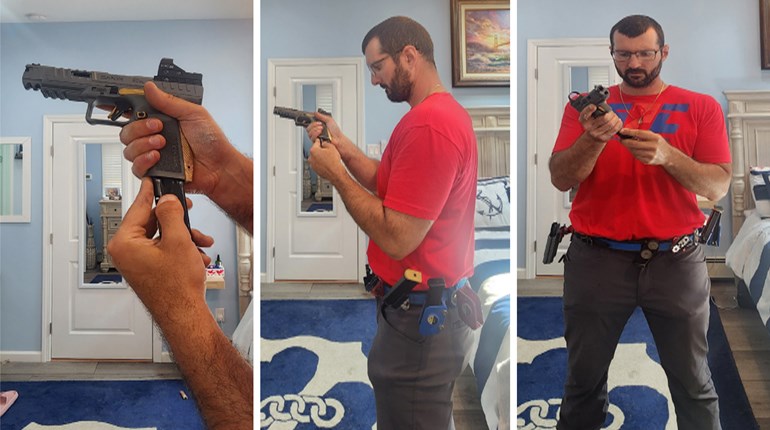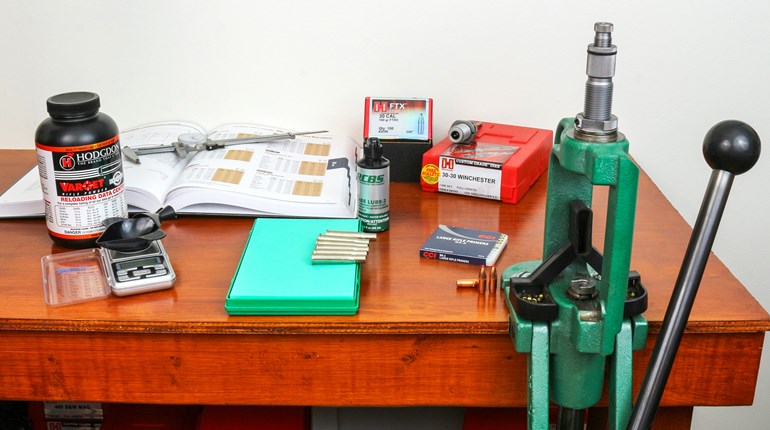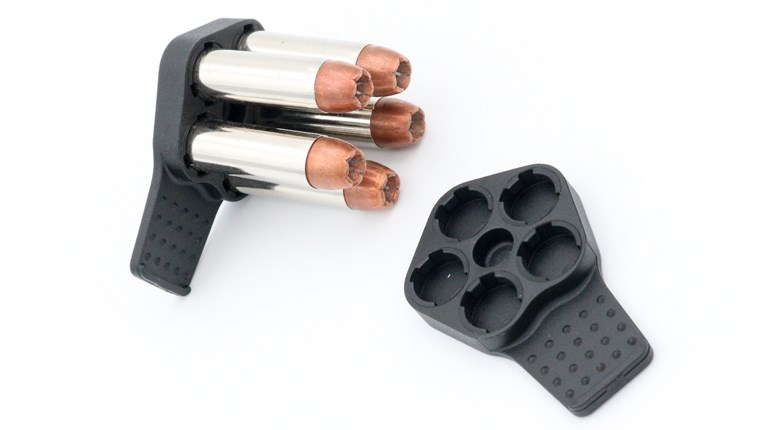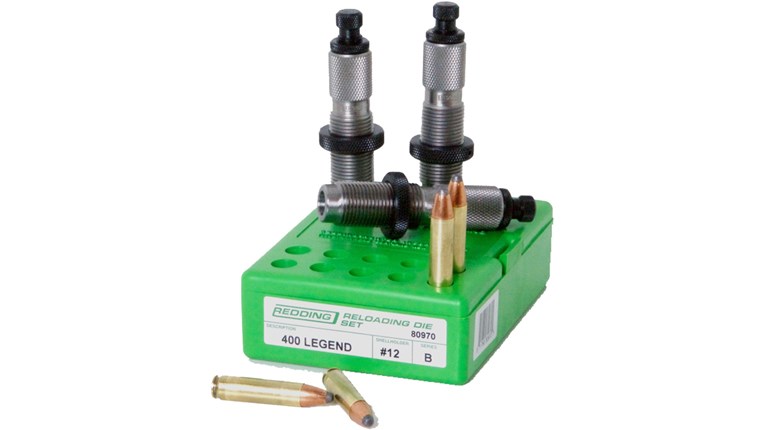
It’s our experience that it rarely pays to be dictatorial. In the main, it’s rarely necessary, to say nothing of just plain rude. There often seems to be a sort of karmic burden, too: The more emphatic our insistence, the more painful the rebound if we should prove incorrect after all. That whole humility thing, don’t you know.
Such doggedness is also a reliable indicator of a seriously closed mind: Just look at the anti-self-defense types. They can’t imagine their own need for a weapon, much less yours (and much, much less a firearm) to defend themselves or loved ones. Quite plainly, their luck has been vastly better than many others, and a gambol through the massive quality-of-life downgrades catalogued in the yearly FBI UCR is beneath their elevated sensibilities. But it’ll all work out, right? Right up to the point where it doesn’t.
A caution against such a dictatorial attitude applies to defensive/protective shooting in an important way as well, or at least we believe it should: Method X, however sound, cannot always produce result Y when employed by shooter Z. The possible reasons are manifold: Physical differences, firearm differences, even simple age or gender can render otherwise excellent methods dubious.
Well, this is not one of those times.
… we assert that proper magazine-fed reloading technique has only two states—correct and incorrect.At the risk of being dictatorial, we assert that proper magazine-fed reloading technique has only two states—correct and incorrect. In fact, it’s probably fair to say there isn’t anything more uniformly agreed upon in all of handgunning. Luckily, it ddevolves to two considerations.
Firearm Position
In a word, “high.”
If you have a reloading method that has you looking more than about 10 degrees below eye level at your semi-auto, you are putting yourself at a major disadvantage on at least three fronts.
The first is pure Carry Life. If you lower your firearm very much at all, you will, of geometric necessity, be taking your eyes off the threat. If you are reloading, we have to presume you’ve already fired (though you could—groan—be clearing a malfunction as well). But your primary task remains getting and staying off the aggressor’s “X,” and you simply can’t do this if your head is down. Our Special Operations community friends call this getting “lost in the gun;” it’s a terrible habit to acquire, and worse still, to break.
The second borrows from our special operators too, with the notion of the “work space.” This conception capitalizes on a fairly obvious neuro-muscular fact: The cubic foot or so of space between the eyebrows and mid-chest (vertically), between the shoulders (horizontally), and extending outwards from the body is where our coordination is best. The hands cooperate most speedily and effectively under the continuous feedback of moment-to-moment inspection in this volume of space.
The third consideration for keeping the firearm high is a combination, in a sense, of the other two. In order to get the most precision as well as speed (in all circumstances, including while you move), you have to look at the reload. If you keep the firearm in the work space, you can do this, yet not lose peripheral sight of an aggressor. You may need to tilt your pistol slightly outboard, and/or raise it, but do so if it lets you see the actual magwell. This is faster and more precise than sketching the glance in and not really seeing where the top of the magazine is headed. (You’ll frequently see the far side of the magwell from the shooter’s perspective marked with some hi-visibility cue to reinforce this need to see this reload “target” each and every time.) Note that the bias toward “higher” keeps the reload and threat vector aligned even better in visual terms.
A desirable side effect here is that re-presentation toward the threat is more nearly identical to the end of your draw stroke in terms of rejoining the hands, and gives a comparatively long, steady outward extension during which the eyes can reacquire the sight(s) and any remaining threats.
Our Special Operations community friends call this getting “lost in the gun;” it’s a terrible habit to acquire, and worse still, to break.The worst of the departures from this doesn’t pull the firearm horizontally back into the workspace as the thumb releases the magazine. Instead, the hand rotates downward and outward (strong hand palm turning up and off the body midline), leaving the magwell roughly horizontal, or even slightly up. While it affords a good view of the base of the grip and magazine/magwell, we argue such a vista is essentially worthless. It’s bad business on several grounds.
In the first place, a shooter who does this has surrendered the aid of gravity in dropping the magazine out of the pistol. (If your carry gun can’t drop mags free, we suggest you need a new one, though this is beyond our present scope). Next is a major vision problem. Only an aggressor’s feet will now be visible in the upper portion of your peripheral vision—you’re looking waaaay down at this point. Last is the time/distance of the hands to a re-engagement position. Dropping the gun down means you have to move it at least half-again as far compared to the correct method, plus the weak hand is out of position to reacquire the grip. Not just farther, then, but a more complex re-presentation to boot.
Correct positioning mechanics draw the pistol back toward the face, lowering it as little as possible—it isn’t essential for the entire gun to be in the work space, but the magwell needs to be, and the higher, the better. Spent magazine release takes place as the gun comes back. For right-handers, the muzzle will generally rise and point slightly left as the base of the firearm is turned toward the shooter to give a view of the mag well. In theory at least, a properly gripped magazine is poised for insertion, seating and representation.
Magazine Position, Sort Of
While there are many possible starting positions or locations for recharge magazines, none are part of the reload process in the purest sense. The crucial component for our purposes is how any retrieval ends, because that’s where the reload itself actually commences.
Once again, considered opinion and widespread practice are as universal on very few things as they are here: Wherever your mag starts—belt/pouch, pocket, etc.—it must reach the magwell with the cartridge nose out (away from the shooter) and with the index finger of the reloading/weak hand pointing upward and parallel to the front of the magazine. This has an important implication that is often overlooked: If your mags are in a belt rig or similar, bullet noses point forward.
There remains some modest debate about precisely where the tip of the index finger should be. Some experts say on the nose of the top cartridge, others “just under.” We’re semi-agnostic. The purpose of pointing the finger in this way is to capitalize on the brain’s highly accurate, rapid ability to join the hands and/or digits with the pointing reflex. We prefer a finger position that still takes advantage of this optimized joining, but without compromising magazine seating.
An even worse idea, however, is a slower and more complex reload as your only option.This is especially important for those with smaller hands. If these shooters sacrifice too much palm “real estate” to move the fingertip to the very end of the magazine, seating the new mag may become a separate, or at least adjunct, operation. In other words, slower, and potentially a failure point.
In the end, there’s a balance to be struck. Keeping the fingertip as high as possible on the magazine increases the accuracy of “pointing at the reload,” while moving the hand down to facilitate both smooth and successful seating is very nearly as crucial. A less efficient “point,” but sure “seat” is a whole lot faster than a magazine that falls to the ground when seating fails, and especially if it’s your only secondary capacity.
While it’s a tad vintage now, this is still worth a look. It’s only 23 seconds, but a better 23—at least on the topic of reloads—is hard to imagine. You’ll likely recognize Travis Tomasie, formerly of the U.S. Army’s Marksmanship Unit and now at Remington. While there are plenty of similar demos available, this remains a favorite because the deliberateness that a good reload requires is not lost or sacrificed in the pure—and dazzling—speed. We grant that he’s not using a remotely practical carry gun, but this gets us back to where we started: With nearly any modern magazine-fed pistol, the elements are the same. Learning them correctly pays off big time.
We’ll anticipate a likely question as we wrap up: What about magazine retention? This is especially apropos to the Carry Life, if only because carrying more than one in EDC situations is uncommon. Following our method literally, what we’ve talked about is a “speed reload,” and it is not beloved of many carry-oriented instructors and curriculums because it often puts unshot rounds on the ground. They (correctly) assert this is a bad idea when your supply is limited.
An even worse idea, however, is a slower and more complex reload as your only option. By learning the speed method properly and first, the crucial components are in place—proper gun position, proper magazine grasp, and particularly the maintenance of tactical awareness. These will keep your firearm running if you’re pressed to action. The additions required by the tac reload—“swimming” the new magazine in the fingers, and correctly storing the old—are critically useful and should be learned and practiced. But in extremis, they are not quite as essential: If you absolutely must defend yourself or protect others, speed will very likely matter. Otherwise, your priority should be on cover and disengagement. If that’s truly not possible, the conundrum resurfaces, and the “what-ifs” can be quite literally endless.
So practice the correct reload method, and Carry on. That’s an order …
Frank Winn has been studying arms and their relationship to tyranny, meaningful liberty and personal security all his adult life. He has been a firearms safety/shooting instructor for more than 20 years, and earned state, regional and national titles in several competitive disciplines.


































